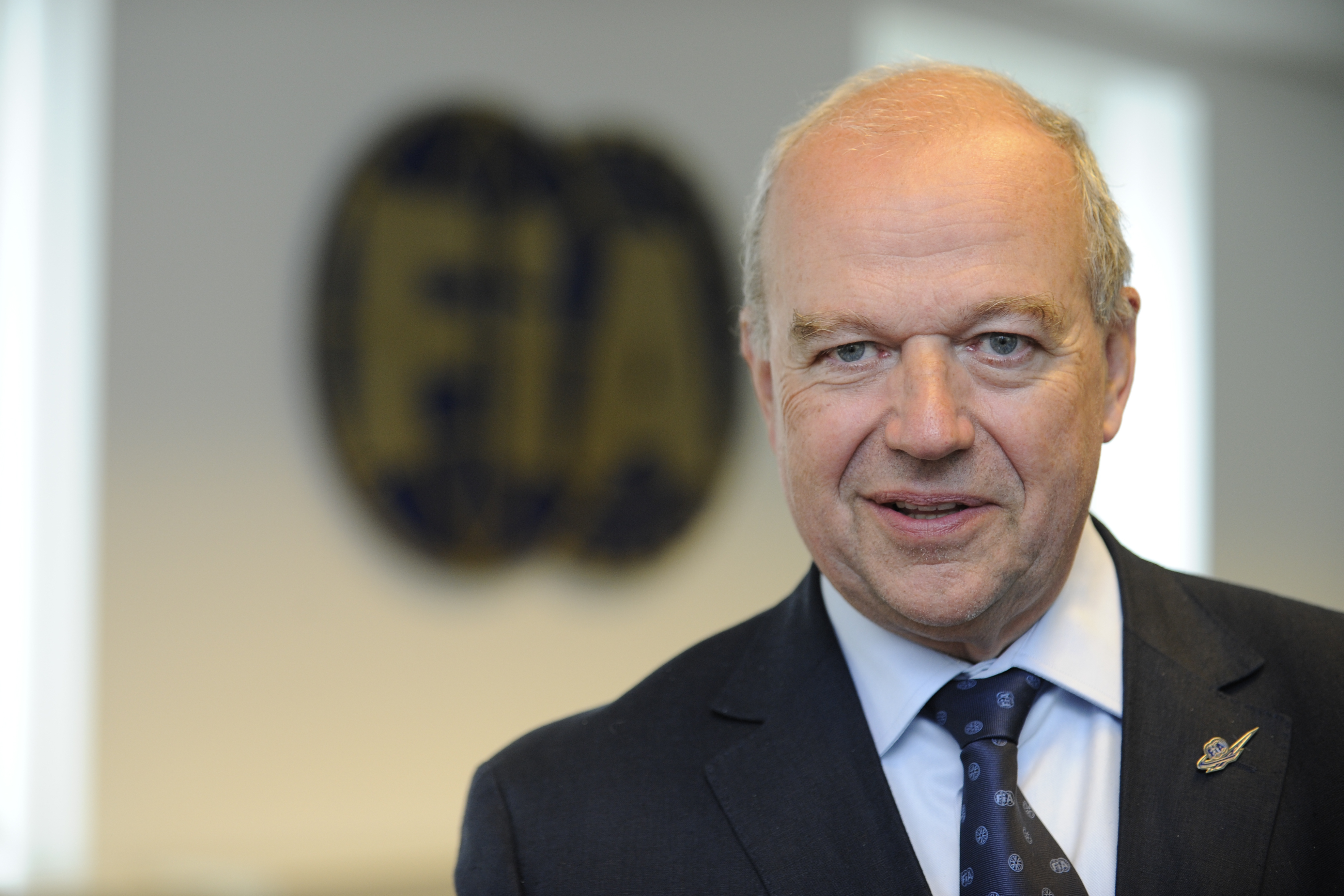
The FIA’s Region I president Thierry Willemarck tells Colin Sowman about his organisation’s campaigning work for the rights of road users and mobility for all.
The
Today the FIA is divided into four regions that bring together motoring organisations from 141 countries across the globe. Motorists from Europe, the Middle East and Africa Region are represented in Region I, those from Asia and Oceania come under Region II with Regions III and IV representing North America and South and Central America respectively. The organisation’s activities fall into three key interlinked areas – mobility, campaigns and sport.
Thierry Willemarck, CEO of Touring Club Belgium (TCB), was elected as president of FIA’s Region I in May 2013. He joined the TCB in 2001 following a career in the oil industry and helped it become an innovator; launching a car sharing service, establishing electric bike repairs and introducing a streamlined car sale system for members.
The Region I office is located in Brussels and promotes the interests of members, not only as motorists but as public transport users, pedestrians and tourists. Its work focuses on road safety, consumer and environmental protection and the promotion of sustainable motoring with its activities primarily directed towards the EU’s institutions. Funding comes from the 38 million members belonging to 112 motoring and touring clubs.
Willemarck’s goal is to bring Region I members together with a single voice on common issues of concern – as already happens on issues including mileage fraud awareness, road safety for cyclists and motorcyclists and data protection for connected cars. “When we have a critical mass of members taking part, the impact is indeed impressive,” he said.
The timing of his tenure does not go unnoticed: “We are at a moment when new technologies are poised to make a huge difference in how we get around in our daily lives. We believe that day–to-day mobility must be protected, as it is a key enabler for economic growth and social interaction and the FIA’s goal is to secure a mobility that is safe, affordable, sustainable and efficient.”
With that in mind he says the FIA is anticipating future mobility challenges and encouraging disruptive change for Clubs to be prepared, but he is concerned that consumers are not yet at the centre of the wider mobility discussion.
For that to happen he says policymakers, Mobility Clubs and the public all need to take a step back to see the full picture and evaluate where mobility could be in 20 or even 30 years’ time.
“The work to achieve those outcomes needs to start now, whether we are thinking of connectivity, Mobility-as-a-Service (MaaS) or alternative fuels. It is the steps we take today that will lead to safer, more streamlined and cleaner mobility.
“We need policymakers begin to holistically address concerns in the mobility sector. Authorities should focus on the goals they want to achieve and find the best mix of policies to achieve them, rather than relying on ‘quick fixes’ that end up restricting mobility.”
That is not to say that he (and the FIA) does not take seriously the environmental aspects of transport. “Quite the opposite. We have been supporting ambitious emissions targets according to a more realistic test cycle for CO2 and the implementation of a European standard to measure real driving emissions for NOx.
“Legislation has the power to steer innovation in the right direction, allowing ever cleaner mobility for all,” he adds.
Looking at other issues Willemarck notes that eCall will make wireless telematics a standard feature on new vehicles in Europe from 2018 and says: “Connectivity could lead to a revolution in mobility, making it greener and safer, if deployed in a manner that is beneficial to consumers.
“We are working with the European institutions to bring this technology to market in a manner that will ensure consumers are in control of their data and have a free choice of in-vehicle services providers.”
Region 1 and its members have launched a ‘My Car My Data’ campaign to raise public awareness on vehicle data and to call for fair competition in the aftermarket for connected vehicle services. “Our campaign calls for legislation to ensure drivers truly ‘own’ their car data and can give informed consent on how it is used. We want fair competition in the market for vehicle data, where a variety of service providers should have the right to develop safe products and functionalities. Only then can consumers have the right to freely choose what matches their needs among a variety of safe services,” says Willemarck.
However, he says legislation is not the only agent of change and cites the rise of convenient, on-demand travel services such as Air BnB and Uber changing attitudes to mobility: “Citizens are looking for flexible solutions to their daily transport needs. This is where MaaS has the potential to overtake the traditional vehicle ownership model, as users are more interested in individual mobility solutions based on their needs.”
FIA Region I is a founding member of the Mobility as a Service Alliance which has set itself the goal of enabling citizens to optimally combine transport modes to suit their individual needs - which would be good for efficiency and sustainability. It is a consortium of public and private stakeholders that will examine how to create value by offering users tailored mobility packages and seek to create the right European framework, which could be adapted to local circumstances.
Willemarck says the key to MaaS is enhancing multimodal transport. “Today commuters are often frustrated by the effort needed to get from A to B if it requires more than one form of transport. By offering the commuter multiple mobility services, MaaS can optimise all modes of travel. This will require investment to create smooth connections between transport modes and a seamless user experience.”
Many of the FIA’s priorities, such as road safety, are common across all its regions with variations to reflect their degree of motorisation. “In Europe the challenge is to keep striving for even better results and we support Vision Zero. In the Middle East and Africa, our activities are at grassroots level; informing the public about the rules of the road and ensuring governments are aware of the need for enforcement.
The FIA has committed itself to global initiatives such as the UN’s Decade of Action for Road Safety. “We have also created the FIA Action for Road Safety - our own global response to road safety concerns,” Willemarck adds.
It is evident that Willemarck takes a long-term view when balancing the FIA’s remit to promote the interests of motorists with concerns about environmental protection and sustainability.
He says: “People are only motorists part of the time, many also ride bicycles, most are pedestrians at some time during their day and all have a constant need to breathe. Our Clubs represent citizens that use a variety of transport options; not only car owners. Our goal is to make all modes of transportation more efficient and integrated and we are looking for intelligent solutions, not political ones.
“Policymakers often make short-sighted decisions that penalise motorists without addressing underlying issues,” he says citing the exclusion of cars from city centres to lower emissions. “If the public transport network is not sufficient, this could exclude people dependent on a personal vehicle from full economic and social contribution. Policies to improve the environment should start with more efficient vehicles. We need to incentivise consumers, not punish them for using a car when there are no realistic alternatives. Progress will come through the integration and improvement of mobility, not by imposing more restrictions.”
That is not to say the organisation is lenient in the area of emissions testing. “We continue to advocate stricter emissions testing for both NOx and CO2 with EU Institutions. Improving vehicle emissions labelling would empower consumers to choose the vehicle best suited to their needs and we look forward to contributing to the Commission’s work on setting post 2020 CO2 targets.”
He stresses that users must be kept centre-stage in discussion about improving cross-modal connections, protecting user’s connected vehicle data, or ensuring consumers know their vehicle’s real emissions. “We implore decision-makers to include end users in decision-making. It makes political sense too as the inclusion of the public would lead to a higher acceptance of policies.”
Such actions are increasingly necessary as global trends such as ageing populations, urbanisation and resource scarcity are having a major impact on the mobility sector. “Effectively and safely deployed, automated vehicles could offer the elderly autonomy and the ability to participate in society for much longer. Cities such as London and Gothenburg are already testing these vehicles for real-world use.”
He highlights the hurdles that alternative-fuel vehicles still face with inconsistent infrastructure and uncertain resale values. “Yet the Norwegian government’s commitment to electromobility has resulted in incentives that make it much more popular for the public. And with urbanisation increasing the need for mobility services, Finland is making an effort to start MaaS programmes and facilitate the convenience of mobility options.
“To avoid future problems the governments in Norway and Finland have identified the future mobility they want and are taking steps now to create that future.
“I would like to see more governments and authorities adopt these proactive, consumer-focussed approaches.”







